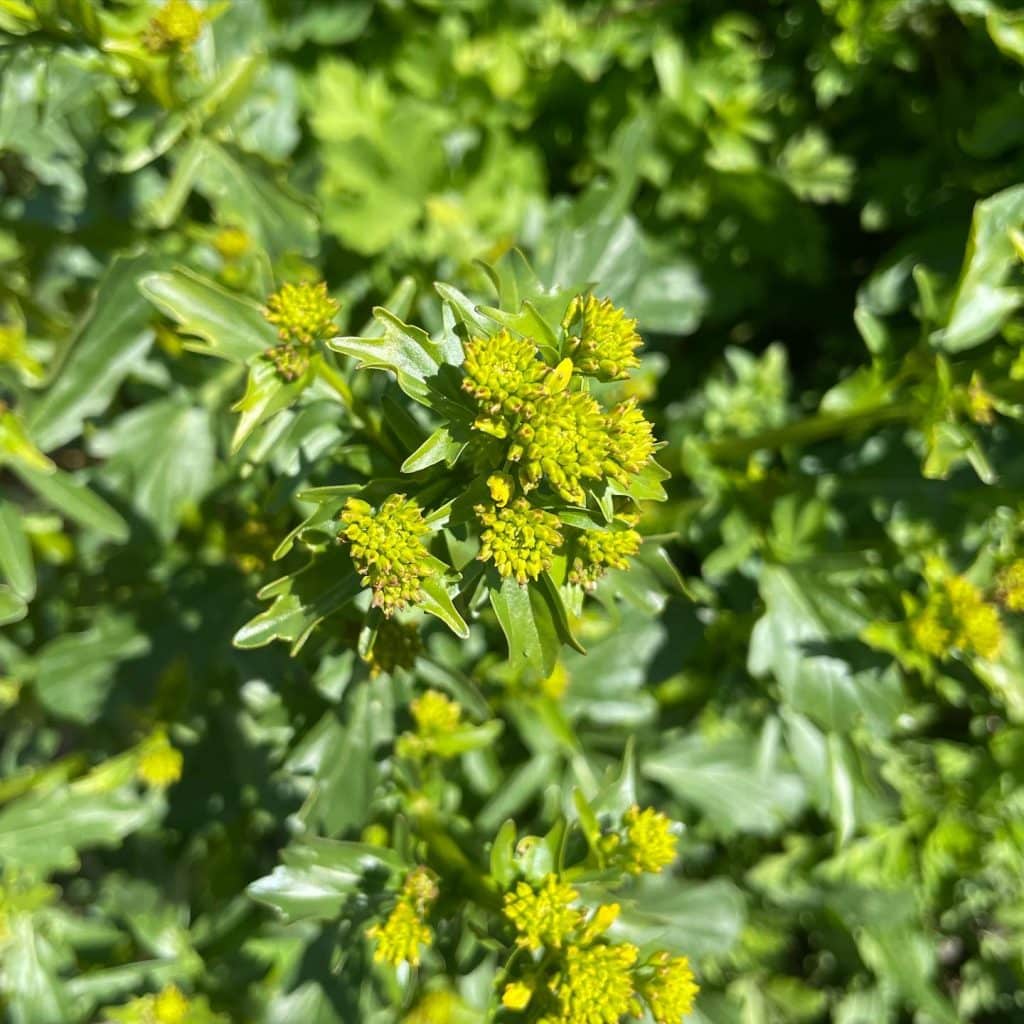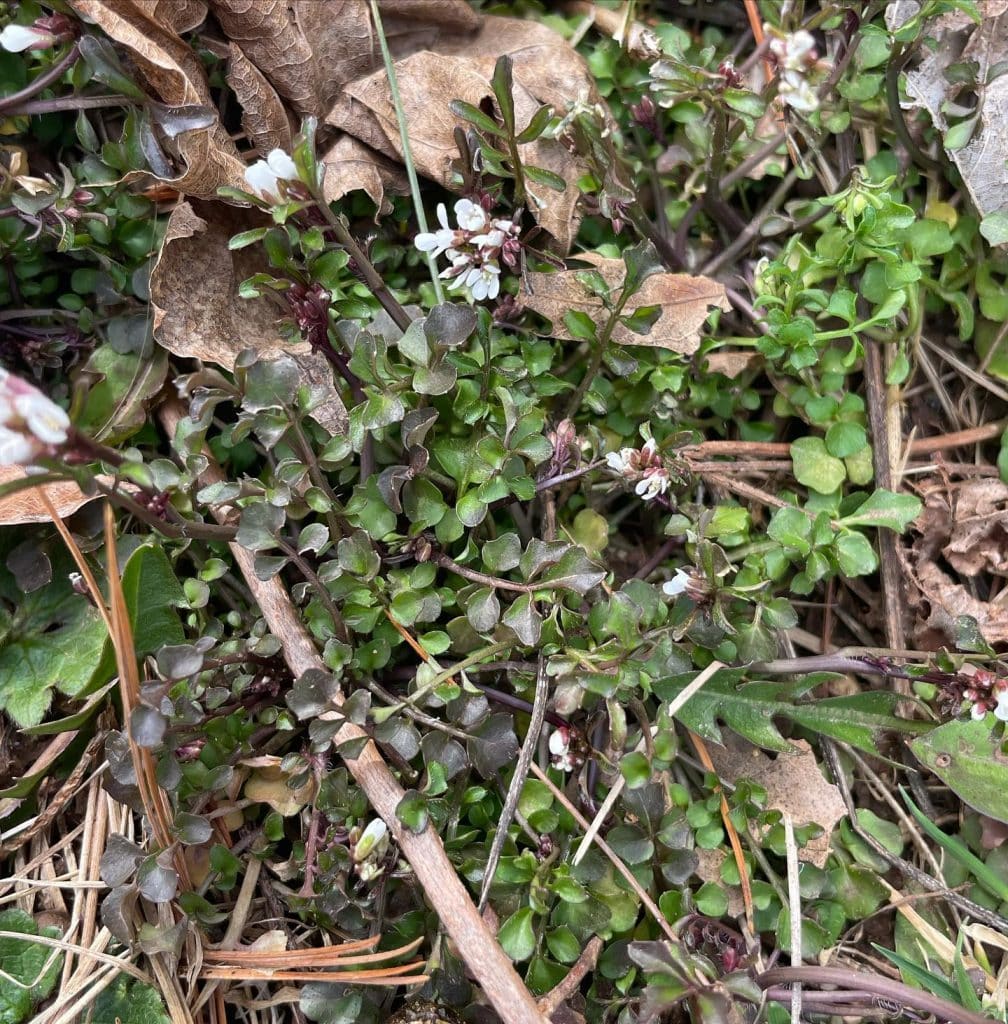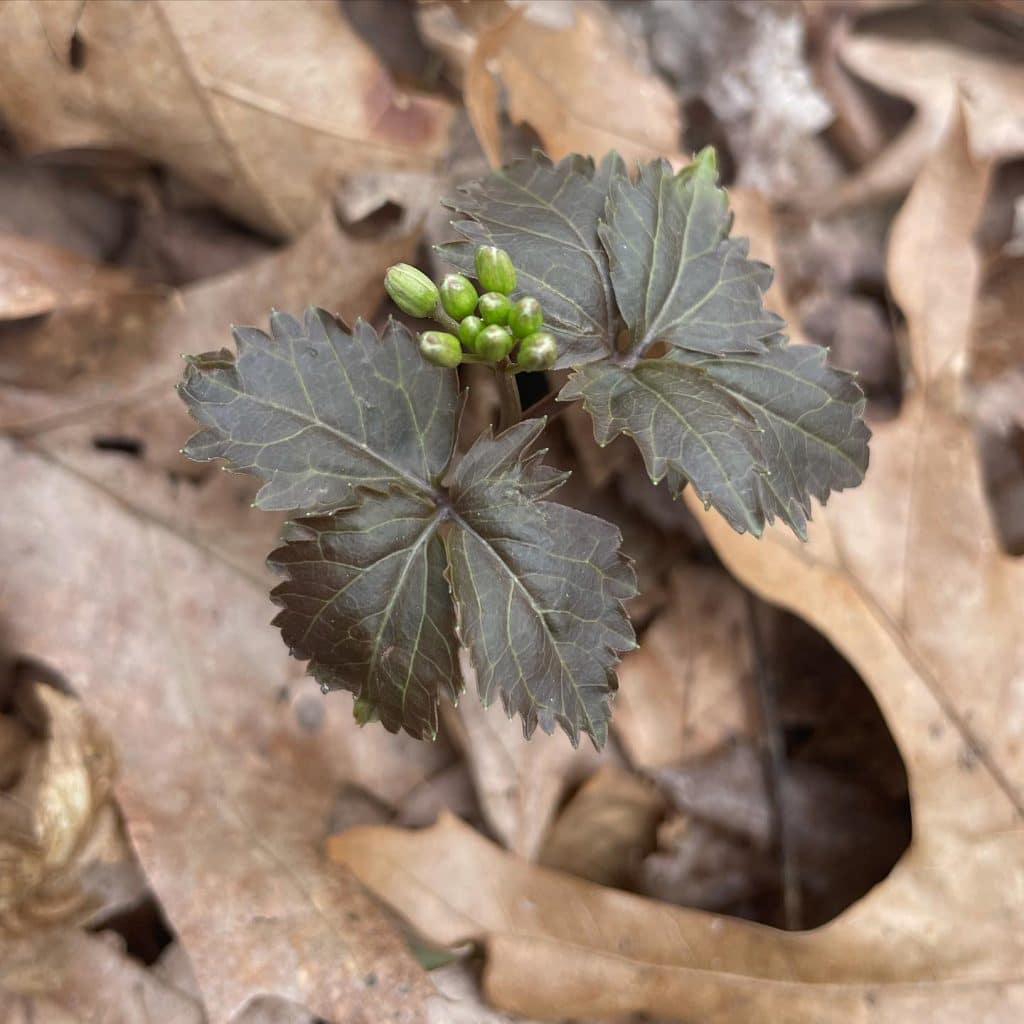Barbarea vulgaris – Wintercress

Wintercress (Barbarea vulgaris) is a non-native plant in the mustard family. Wintercress, also known as Yellow Rocket, can be found in fields, gardens, and disturbed soil in full sun. Wintercress produces a basal rosette of deeply lobed emerald green leaves. The leaves resemble arugula with larger, rounder lobes. The plant produces a hairless flower stem […]
Cardamine hirsuta – Hairy Bittercress

Hairy bittercress (Cardamine hirsuta) is an edible plant in the mustard family whose leaves can be used as microgreens. Hairy bittercress is named for the tiny hairs that appear on its leaves and stems. It can also be identified by its small white flowers with four petals that are produced in spring. Hairy bittercress thrives […]
Cardamine diphylla – Two-leaved Toothwort

Two-leaved Toothwort (Cardamine diphylla) is a native, edible plant in the brassicaceae (mustard) family. From the root of Two-leaved Toothwort emerges 2 leaves, each with 3 coarsely toothed leaflets. The plant emerges early in spring and blooms from mid-April to mid-May. Two-leaved Toothwort can be found in most of Eastern North America. It often […]
Thlaspi arvense – Field Pennycress

Field Pennycress (Thlaspi arvense) is a non-native, edible mustard. Field pennycress has alternate, hairless leaves with wavy margins. It produces clusters of white flowers with four petals at the top of the stems. Young leaves can be eaten raw or cooked. After the plant flowers, the leaves will be more bitter. The seeds can be […]
